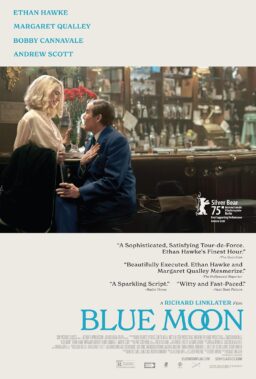From: Marc Caddell, Austin, TX:
Re: “Tomas, Tommy, Tom: Past, present and future? I do not find this explanation [of Darren Aronofsky’s “The Fountain“] to be nearly as clear or convincing as Mr. Withers seems to believe it is. He says, “It is hard to believe that if Tom 2 is Tom 1 still alive in the future, that the treasured memories of a lost wife would have been combined and given equal weight with the imagined interaction with a fictional queen.” My gosh, I don’t find that hard to believe at all! If Tom 2 is the same person as Tom 1, as I believe he is, then he has been living with his wife’s unfinished book for 500 years. The story has haunted him, as have memories of his wife, who we clearly see visiting him in the bubble imploring him to “finish it” (the book). What Mr. Withers fails to address is the illogic of Izzy visiting a fictional future Tomas in the bubble saying “finish it” when, if the bubble Tom is fictional, he would have no knowledge of the present-day version of Izzy.
My interpretation is this:
Conquistador Tomas is a fiction. Modern-day Tom actually DID discover a way to cheat death (as evidenced by Ellen Burstyn’s character’s declaration to that effect five minutes after Izzy died). The tree in the bubble is the tree that grew from the seed he planted over Izzy’s grave on Ellen Burstyn’s character’s farm. He’s nourishing the tree and trying to take it to Xibalba because he believes it contains the soul of his dead wife. He finally, after 500 years, comes to the realization that by trying to cheat death, you may not get the result you desire*. This is the lesson presented in the chapter that he finally writes for Izzy’s book. In this chapter, the Conquistador reaches the tree and drinks its sap, but the (unintended) result is that he will achieve immortality not as a man but as the flowers around the tree.
Which takes us back to Mr. Withers’s letter. The flaw in his interpretation is that the Conquistador in the film is clearly seen turning to plants at the base of the tree. If this is so, then how is it possible that he has turned back into a man who lives for hundreds of years in a space bubble? My interpretation requires no further straining of credulity than his does. The beauty of the film is that it is, in fact, open to these interpretations, and it still communicates its messages without being altogether linear and crystal clear. I appreciated this impressionistic effect, and I gave the movie 4 stars out of 5 on Netflix. Apparently I liked it more than most people.
* The result that Tom got was twofold: he wasted what time he had with Izzy by trying to prolong her life, which he clearly regretted, as he recreated his past at the end of the film by imagining spending more time with her. The other result that Tom got was that he spent 500 years alone with a tree and his memories in a space bubble. Gee, what fun!
Got your own take on “The Fountain”? Join the discussion here:
http://tinyurl.com/2pcdy9











